TIDES OF THE BODY
Poems by Anne Whitehouse
TIDES OF THE BODY
Breath, shape-changer,
the organs gently swaying in their fascial hammocks
like the flora and fauna of an undersea world—
the yellow of the small intestine,
deep coral of the liver, green bile duct,
pancreas the color of the ocean floor.
Blood circulating through arterial rivers
in an endless loop.
Gently I placed my fingers
over the openings of my ears.
The sound of my breath inside my throat
was like the echo in a seashell,
ever-present, softly audible.
I tuned out the world for a moment
so I could listen.
LOSGELASSENHEIT*
Think of anatomy as a refuge,
palpable, certain.
Finding a precise alignment
to convey a path to the heart.
Consider the curve
of the slender gracilis muscle,
like an unfurled ribbon
crossing the inner hip and knee.
An artifact of evolution,
gracilis runs in a straight line
in bent-knee quadrupeds.
When humans stood upright,
and our knees extended,
gracilis, bound by fascia,
stayed behind.
Guided by its rider,
the horse gathers up speed
and leaps with a power
beyond human measure.
Horse and rider in perfect union,
loose and completely relaxed,
like a child connected to its mother
before its first breath.
*Losgelassenheit – a German word, literally, the quality of having loosened and let go, conveying a union of horse and rider.
ANCONEUS AND POPLITEUS
The limb buds of the embryo
form laterally in the womb,
as if the arms and legs will grow
out to each side. But at two months
the buds point forward.
The upper limbs rotate outward,
and the lower limbs inward.
When we flex the leg at the knee,
the movement is backwards,
but the forearm flexing at the elbow
is a forward movement.
Consider, then, anconeus
and popliteus—two triangular-
shaped muscles—anconeus
at the back of the elbow,
popliteus behind the knee,
structurally similar
and functionally opposite.
Anconeus locks the elbow
in full extension,
while popliteus unlocks
the fully extended knee—
this small stabilizer,
in deep and close to the joint,
overlaid by the big flashy muscles
used in acceleration.
Modest little popliteus keeps
our kneecaps tracking true.
My legs lengthen as my body
gathers speed, stride after stride.
I can run across a field,
but I will never stand on my hands
like the yogis balancing upside down
in the middle of the room.
Locking their elbows,
anconeus makes it possible.
When the radius crosses the ulna,
and I see the back of my hand,
I place my other hand on my elbow
and feel anconeus contract,
and think how often the essential
is small and hidden.
HEART BEAT
The rhythm of life is life itself,
the body’s timekeeper
that recedes as it advances,
like the sun slipping
past the horizon
and reappearing
on the other side
of the world.
IN THE NECROPOLIS
In the cemetery of Beit She’arim
inside a tomb from the third century
paved with mosaic
and decorated with wildlife reliefs
is carved an inscription
commemorating a local resident.
The author, though Jewish, had a Greek style:
I lie, son of Leontius dead, son of Sappho,
who after having gathered of the fruit
of all wisdom left the light.
Woe is me, in my Beit She’arim.
After having gone to Hades,
I, Justus, lie here with many of my relatives
for that is what powerful fate has decreed.
Be consoled, Justus. No one is immortal.
Dark is the house without windows.
Dust is the only weather in the tomb.
Indifferent as a reflecting moon,
a green moth flitted over the stone,
then lay for a long moment on the ground.

About the Author
Anne Whitehouse is the author of six poetry collections, most recently Meteor Shower from Dos Madres Press. In 2016 she won the Songs of Eretz poetry award, Common Good Books’ poems of gratitude contest, RhymeOn! poetry award, and the F.Scott and Zelda Fitzgerald Museum poetry prize (second place).



















